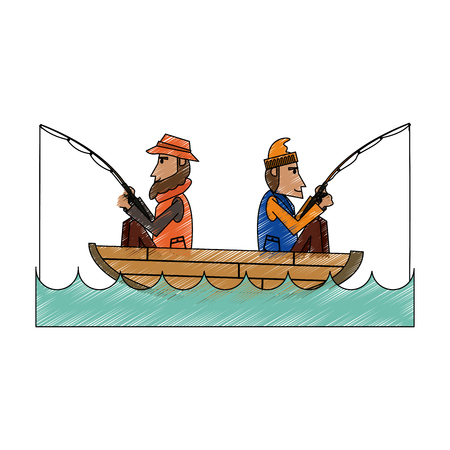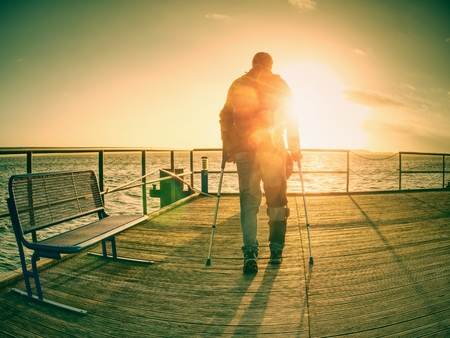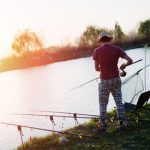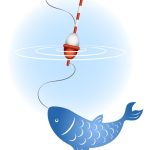Prime Fishing Destinations
Spring is one of the best times of year for saltwater fishing along the East and Gulf Coasts. As the water begins to warm, a wide variety of fish species become more active and start moving closer to shore. Whether you’re casting from a pier or heading out on a boat, there are plenty of great spots to explore. Here are some of the top spring fishing destinations you won’t want to miss.
Outer Banks, North Carolina
The Outer Banks is a prime spot for spring fishing thanks to its location where the Gulf Stream comes closest to land. This area offers both surf and offshore fishing opportunities. In the spring, anglers can expect to catch red drum, bluefish, striped bass, and even early-season tuna offshore.
Popular Catches in Spring:
| Species | Best Time | Fishing Method |
|---|---|---|
| Red Drum | March – May | Surf Casting, Inshore Boats |
| Bluefish | April – June | Pier Fishing, Trolling |
| Tuna (Offshore) | Late April – May | Deep Sea Charter |
Florida Keys
The Florida Keys are a year-round fishing paradise, but spring brings in some exciting action. As migratory fish pass through the area, you’ll find tarpon starting their run—especially around bridges and flats. Permit and bonefish also become more active in the shallows during this time.
Spring Fishing Highlights:
| Target Fish | Location Type | Tactics |
|---|---|---|
| Tarpon | Bridges, Flats | Live Bait, Fly Fishing |
| Permit | Sandy Flats | Sight Casting with Crabs |
| Bonefish | Mangrove Edges, Flats | Light Tackle, Fly Rods |
Louisiana Marshlands
The marshes of southern Louisiana offer one of the most unique saltwater fishing experiences in the U.S. During spring, redfish and speckled trout are plentiful in these shallow brackish waters. The complex system of marshes and bayous makes it ideal for light tackle and fly fishing adventures.
Top Fish to Catch in Louisiana Marshes:
| Fish Species | Peak Months | Recommended Gear |
|---|---|---|
| Redfish (Red Drum) | March – May | Spinning Rods, Soft Plastics |
| Speckled Trout | April – June | Popping Corks, Live Shrimp |
No matter your experience level or preferred style of fishing, spring along the East and Gulf Coasts offers exciting opportunities with beautiful scenery and abundant fish. These destinations are just the beginning when it comes to enjoying everything saltwater fishing has to offer this season.
2. Seasonal Fish Species and Migration Patterns
Spring is a fantastic time to hit the saltwater along the East and Gulf Coasts, thanks to warming waters that trigger the migration of several popular game fish. Understanding when and where these species move can make all the difference between a slow day and a full cooler. Let’s dive into some of the top species anglers chase during springtime.
Redfish (Red Drum)
Redfish are one of the most sought-after inshore species during spring, especially along the Gulf Coast and lower Atlantic states like Florida, Georgia, and the Carolinas. As water temperatures rise into the 60s°F range, redfish begin to feed more aggressively in shallow marshes, estuaries, and flats.
Best Time to Target:
- March to May
Hot Spots:
- Louisiana marshes
- Texas bays
- Florida Panhandle grass flats
Speckled Trout (Spotted Seatrout)
Speckled trout follow similar patterns to redfish in spring. As they emerge from their deeper winter holes, they move onto grassy flats and near oyster beds to spawn and feed. They’re especially active during early morning and late afternoon hours.
Best Time to Target:
- April through June
Hot Spots:
- Tampa Bay, FL
- Mobile Bay, AL
- Galveston Bay, TX
Striped Bass (Stripers)
Striped bass are iconic along the Northeast coast during springtime. These fish migrate from deeper offshore waters and southern overwintering spots into rivers and estuaries to spawn. The action starts as early as March in the Mid-Atlantic and moves northward as temperatures climb.
Best Time to Target:
- Late March through June (depending on latitude)
Hot Spots:
- Chesapeake Bay (MD & VA)
- Hudson River (NY)
- Merrimack River (MA)
Cobia
Cobia offer an exciting challenge for saltwater anglers during spring. These powerful fish migrate up the East Coast from Florida, often shadowing rays or cruising nearshore structures like buoys and wrecks. Sight-fishing for cobia is especially popular due to their habit of swimming near the surface.
Best Time to Target:
- April through June
Hot Spots:
- Northern Gulf Coast (Pensacola to Panama City)
- Southeast Virginia coastlines
- Savannah, GA area reefs
Spring Migration Overview Table
| Species | Migrating Region | Peak Months | Main Habitat in Spring |
|---|---|---|---|
| Redfish | Gulf Coast & Southeast Atlantic | March – May | Marshes, bays, flats |
| Speckled Trout | Gulf Coast & Florida Atlantic side | April – June | Eelgrass beds, oyster bars |
| Striped Bass | Northeast & Mid-Atlantic Rivers/Estuaries | March – June | Tidal rivers, coastal creeks |
| Cobia | Northern Gulf & Southeast Atlantic coastlines | April – June | Nearsurface waters, reefs, buoys |
The key to successful spring fishing is timing your trips with these migration windows. Water temperature is a major factor — once it hits that magic range for each species, it’s game on. Keep an eye on local reports and talk with bait shops or charter captains to stay ahead of the bite.

3. Essential Gear and Tackle
When spring rolls around along the East and Gulf Coasts, saltwater fishing comes alive with a wide variety of species like redfish, speckled trout, striped bass, flounder, and Spanish mackerel. To make the most out of your trip, having the right gear is key. Here’s a breakdown of what you’ll need to match the changing conditions and fish behavior during the season.
Rods and Reels
Spring fishing often means dealing with varying water temperatures and clarity, so youll want rods and reels that are versatile yet strong enough to handle a surprise big catch.
| Target Species | Rod Recommendation | Reel Type |
|---|---|---|
| Redfish & Speckled Trout | 7 Medium Power Fast Action Spinning Rod | 3000 Series Spinning Reel |
| Striped Bass | 7’6″ Medium-Heavy Power Casting Rod | Baitcasting Reel with 6.3:1 Gear Ratio |
| Flounder | 66″ Medium Light Spinning Rod | 2500 Series Spinning Reel |
| Spanish Mackerel | 7’ Medium Power Fast Action Rod | High-Speed Spinning Reel (4000 Series) |
Bait Choices for Spring Fishing
As water temperatures rise, baitfish activity increases, which draws in predatory species. Matching your bait to whats naturally present in the area can make all the difference.
Recommended Live & Cut Bait:
- Shrimp: Great for trout, redfish, and flounder.
- Mullet (cut or live): Effective for redfish and striped bass.
- Pinfish: Excellent for targeting larger gamefish like snook or bull reds.
- Sardines or Pilchards: A go-to option along the Gulf Coast.
Best Artificial Lures:
- Paddle tail soft plastics: Mimic baitfish and work well in murky waters.
- Spoons: Ideal for fast-moving fish like Spanish mackerel.
- Topwater plugs: Great during early mornings or low-light times when fish are feeding on the surface.
- Suspending twitch baits: Effective in cooler water when fish are sluggish.
Terminal Tackle Setup
Your terminal tackle should reflect both your target species and local water conditions. Water clarity, current strength, and bottom structure all play roles in choosing hooks, leaders, and weights.
| Tackle Component | Recommendation | Why It Works in Spring |
|---|---|---|
| Leader Material | 20–30 lb Fluorocarbon Leader | Invisible in clear water; abrasion-resistant near oyster beds or rocky bottoms. |
| Hooks | #1–3/0 Circle Hooks or J-Hooks (depending on bait size) | Catches corner of mouth; ideal for catch-and-release practices common in spring seasons. |
| Sinkers/Weights | Egg Sinkers (1/4 to 1 oz) or Split Shot Weights | Easily adjustable based on current strength; keeps bait near strike zone without spooking fish. |
| Swivels & Snaps | #5 Barrel Swivel with Snap Connector | Makes it easy to swap lures quickly as conditions change throughout the day. |
Tackle Box Essentials for Spring Trips
- Pliers for hook removal and cutting line.
- A selection of jig heads (1/8 to 1/2 oz).
- A small spool of leader line (fluorocarbon preferred).
- A waterproof tackle box to keep gear dry from spray or sudden spring showers.
The right gear setup will not only improve your success rate but also help you adapt quickly to changing conditions—a must during unpredictable spring weather along the coastlines. Be ready for anything from calm clear mornings to windy afternoons with stirred-up surf. Having these essentials on hand will keep you casting confidently all season long.
4. Techniques for Inshore and Nearshore Fishing
Spring is an exciting time for saltwater fishing along the East and Gulf Coasts. As waters warm up, species like redfish, speckled trout, flounder, bluefish, and striped bass move closer to shore, making inshore and nearshore fishing especially productive. Let’s dive into some popular and effective methods tailored for springtime conditions.
Surf Casting
Surf casting is a favorite along sandy beaches from the Carolinas down to Florida and across the Gulf Coast. During spring, baitfish start moving inshore, drawing predators like pompano, red drum (redfish), and bluefish close to the surf zone.
Key Tips:
- Use long surf rods (9–12 ft) to cast beyond the breakers.
- Target early morning or late afternoon when fish are most active.
- Fresh cut bait like mullet or shrimp works great in spring.
Recommended Gear:
| Item | Description |
|---|---|
| Rod | 10 ft medium-heavy surf rod |
| Reel | Spinning reel with 20–30 lb braided line |
| Bait | Cut mullet, fresh shrimp, sand fleas |
Kayak Fishing
If you want to reach quiet backwaters or nearshore reefs without a big boat, kayak fishing is perfect—especially during spring when winds are calmer and water clarity improves. Areas like Florida’s Gulf Coast, Louisiana marshes, and North Carolina sounds are ideal spots.
Key Tips:
- Focus on shallow flats where redfish and trout feed in spring.
- Use soft plastics or topwater lures early in the day.
- A good anchor or stake-out pole helps hold your position in tidal areas.
Best Conditions for Kayak Fishing:
| Condition | What to Look For |
|---|---|
| Tide Movement | Incoming tide brings fish closer to shorelines |
| Water Temperature | 60–70°F range triggers feeding activity |
| Wind Speed | Less than 10 mph is ideal for paddling and casting |
Wade Fishing
This hands-on method is great for targeting fish in shallow bays, grass flats, and estuaries. It’s common all along the Gulf Coast and lower Atlantic states where access points are abundant.
Key Tips:
- Wear breathable waders or quick-dry clothing depending on temperature.
- Lure selection matters—try soft plastic jerkbaits or paddle tails mimicking baitfish.
- A small tackle box or hip pack helps keep gear light and accessible.
Popular Wade Fishing Species by Region:
| Region | Main Target Species |
|---|---|
| Northeast (NJ to VA) | Striped bass, weakfish, bluefish |
| Southeast (NC to FL) | Redfish, speckled trout, flounder |
| Gulf Coast (FL Panhandle to TX) | Speckled trout, redfish, sheepshead |
No matter which method you choose this spring—surf casting from the beach, paddling out in your kayak, or wading into calm shallows—these techniques will help you connect with some of the season’s best saltwater action along the East and Gulf Coasts.
5. Licenses, Regulations, and Conservation Tips
Before heading out for spring saltwater fishing along the East and Gulf Coasts, its important to understand the local rules that help protect fish populations and ensure a great experience for everyone. Each state has its own licensing requirements and fishing regulations, so make sure youre following the right ones for where youll be casting your line.
Fishing Licenses
Most states require a saltwater fishing license for recreational anglers. These can usually be purchased online, at bait shops, or through state wildlife agencies. Some states also offer short-term or combination licenses for residents and non-residents.
| State | License Required? | Where to Buy |
|---|---|---|
| Florida | Yes | Florida Fish & Wildlife |
| Texas | Yes | Texas Parks & Wildlife |
| North Carolina | Yes | NC Wildlife Resources Commission |
| New York | Yes (Marine Registry) | NY Department of Environmental Conservation |
Seasonal Restrictions & Bag Limits
Certain species have closed seasons during the spring to allow for spawning. Others may have daily bag limits—how many fish you can keep per day—and size limits to protect juvenile fish. These regulations vary by state and species.
Examples of Common Regulations:
| Species | Typical Season Closure* | Bag Limit (per person/day) | Minimum Size Limit |
|---|---|---|---|
| Red Snapper (Gulf) | Closed Jan–May | 2–4 (varies by state) | 16 inches |
| Striped Bass (East Coast) | Varies by state | 1–2 | 28–35 inches slot limit (most states) |
| Spotted Seatrout (Gulf) | No closure in most areas | 5–10 (varies by state) | 15 inches minimum (some slot limits apply) |
*Always check with your local fishery department for up-to-date closures and regulations.
Conservation Tips: Fish Smart, Release Right
#1 Use Circle Hooks When Possible
Circular hooks are more likely to hook fish in the mouth rather than deeper areas, which makes it easier to release them unharmed.
#2 Handle Fish Gently
If youre releasing your catch, wet your hands before touching the fish to avoid damaging their protective slime coat. Avoid squeezing and keep them out of water as briefly as possible.
#3 Know When to Let It Go
If a fish is undersized, out of season, or shows signs of stress or injury, release it quickly using proper techniques. Bringing a dehooking tool or venting tool can help improve survival rates.
#4 Follow “Keep What You’ll Eat” Mindset
You don’t need to fill your cooler every trip. Take what you plan to eat and let the rest swim another day. This helps sustain healthy fisheries for future generations.
Your Local Resources Matter!
The best way to stay informed is by visiting your state’s fish and wildlife website. Many offer mobile apps with real-time regulation updates, tides, and even digital licenses.
Tight lines and responsible fishing make for memorable spring days on the water!


